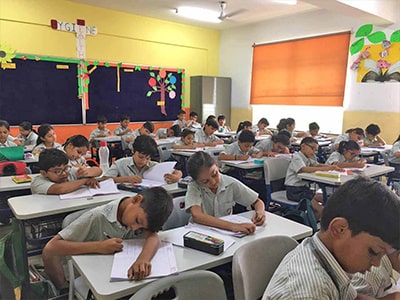The English language can be tricky to grasp, but not impossible. By understanding the complexities of the language you can take your writing from mundane to magnificent. That brings us to understanding sentence construction, which is the essence of writing effectively. A well-structured sentence can keep your readers engaged, and one such essential structure is a compound sentence, which is slightly different compared to a compound-complex sentence. It is a powerful way to convey your ideas or thoughts clearly without confusing your readers. But what exactly is a compound sentence?
In this blog, we will take you through what is a compound sentence, explore the structure and provide you with a few examples to better understand their use. Whether you are looking to improve your writing skills or simply clarify sentence structure, learning about compound sentences can elevate your communication skills.
What is a Compound Sentence?
A compound sentence is a sentence with two or more independent clauses. Independent clauses are clauses containing a subject and verb and may be able to stand on their own as an independent sentence. In short, a compound sentence consists of single, related sentences put together in one. Such clauses are linked with coordinating conjunctions like and, but, or, or a semicolon.
Examples:
- Simple sentence: My name is Sarah. I love to read.
- Compound sentence: My name is Sarah, and I love to read.
- Compound sentence: My name is Sarah; I love to read.
Structure of a Compound Sentence
Components
Independent Clauses: There has to be a subject and verb in each clause. For instance:
I enjoy reading. (Independent clause)
She loves to write. (Independent clause)
Connection Methods
Using Coordinating Conjunctions: When you connect independent clauses with a coordinating conjunction, use a comma before the conjunction.
Example: I enjoy reading, and she loves to write.
Using a Semicolon: You can join the clauses with a semicolon if you don’t want to use a conjunction.
Example: I like to read; she likes to write.
Examples of Compound Sentences
- I would like to take a walk, but the rain came.
- She can play the piano, and he can play the guitar.
- The sun was setting; the sky became orange.
Key Rules
Make sure both parts of the compound sentence are independent clauses.
Do not use comma splices, which are created when two independent clauses are improperly joined with only a comma.
Incorrect: I like coffee, I like tea.
Correct: I like coffee, and I like tea.
Knowledge of how to form compound sentences improves writing through the ability to express ideas in more intricate and subtle ways without losing clarity and coherence.
Examples of Compound Sentences
Let’s look at some more examples of compound sentences with the seven most common coordinating conjunction examples for, and, nor, but, or, yet, and so, which spell out the memorable acronym FANBOYS.
Common Examples
- Joined by FOR: I wanted to go for a run, for it was a beautiful day.
- Joined by AND: He enjoys reading books, and he loves taking photos in his leisure time.
- Joined by NOR: She does not enjoy listening to music, nor does she like watching movies.
- Joined by BUT: I wanted to step out with friends, but it was too sunny.
- Joined by OR: You can travel by an autorickshaw, or you can take the metro.
- Joined by YET: It was hot outside, yet we decided to participate in the marathon.
- Joined by SO: She studied hard, so she passed the exam with flying colours.
Examples with a Semicolon
Here are a few examples of compound sentences that use a semicolon to connect independent clauses.
Example 1: I have a holiday tomorrow; I can wake up late in the morning.
Example 2: He plays the guitar well; his friend sings along beautifully.
Example 3: I love travelling; I want to go to Meghalaya.
Example 4: I wanted to finish my book; however, I fell asleep.
Why Use Compound Sentences?
A compound sentence has several benefits that consist of clarity, interest and general effectiveness. Below are some reasons why you should use a compound sentence.
- Offers clarity of ideas & thoughts: Connecting two similar independent clauses can produce clear and coherent sentences. This kind of structure allows for conveying in a simple and effective manner without overburdening the reader.
- Enhances flow: Compound sentences enhance the quality of writing and prevent a hurried reading process. It makes the writing flow more smoothly.
- Correct run-on sentences: Run-on sentence is a typical English composition error that occurs when a sentence improperly joins clauses. A compound sentence serves to correct run-on sentences through the correct joining of independent clauses with coordinating conjunctions or semicolons.
- Present complicated sentences in brief: Compound sentences assist authors in putting two related ideas in a single sentence and presenting information briefly.
How to Form a Compound Sentence
Step-by-step guide
Using compound sentences requires combining two or more independent clauses. Here’s a step-by-step guide to understand the structure better.
- Ensure each clause can stand alone as individual sentences. For example: I love hiking. She enjoys playing the guitar.
- You can then choose an appropriate coordinating conjunction from the FANBOYS acronym. For example: I love hiking, and she enjoys playing the guitar.
- You can also use a semicolon to connect two clauses if they are closely related. For example: I love hiking; she enjoys playing the guitar.
- If you are using a coordinating conjunction, remember to use a comma before the conjunction. If you are using a semicolon, ensure proper punctuation.
Common Mistakes & How to Avoid Them
Compound sentences are easy, but a few mistakes can hinder the clarity and flow of the sentence. More often than not, it is interchangeably used for compound-complex sentences. Here are a few common errors and tips on how to avoid them.
- Comma Splices: You shouldn’t connect two related clauses with only a comma. Using a coordinating conjunction or a semicolon is essential.
Incorrect: I prefer reading books, my sister prefers watching movies.
Correct: I prefer reading books, and my sister prefers watching movies.
Correct: I prefer reading books; my sister prefers watching movies.
- Run-on Sentences: This is a very common mistake seen by connecting two independent clauses without proper punctuation or conjunctions.
Incorrect: I like knitting my friends enjoy swimming.
Correct: I like knitting, and my friends enjoy swimming.
Correct: I like knitting; my friends enjoy swimming.
- Misuse of semicolons: Semicolons are used to connect two individual clauses. One of the common mistakes noticed is using a semicolon where a comma is needed or the other way around.
Incorrect: The lecture was good; but Rahul didn’t follow.
Correct: The lecture was good, but Rahul didn’t follow.
- Overuse of compound sentences: Using repetitive compound sentences can be monotonous. Instead, using different sentence structures can provide better flow and improve the reader experience.
Incorrect: The study was conducted over six months, and the results were analyzed carefully, and the findings were surprising.
Correct: The six-month study yielded carefully analyzed results, which were surprising.
Practice Exercises
To ensure your mastery of compound sentences and prevent from interchangeably using them instead of a complex compound sentence, attempt the following exercises:
- Use coordinating conjunctions to join the following sentences and form compound sentences:
- I called her many times. She didn’t answer the phone.
- He is intelligent. He is honest.
- He is old. He is active.
- Determine and correct errors in the following sentences:
- I enjoy hiking, I love swimming too.
- The weather is nice; we should go outside but it might rain.
Now, Use Compound Sentences Correctly
The best way to learn how to use compound sentences properly is to practice. You can work on the practice exercise above and continue practising compound sentences more until you understand them and use them well.
Global Indian International School (GIIS), Ahmedabad is one of the top schools in Ahmedabad, India with expert faculty, innovative teaching technologies and a world-class infrastructure that provides a supportive learning environment. We are the best primary schools in Ahmedabad offering curricula that nurture 21st-century skills. Schedule a campus visit today!
 Ahmedabad Campus
Ahmedabad Campus













![Global Montessori Programme [GMP]](https://staging.globalschools.com/ahmedabad/wp-content/uploads/2023/09/l1.png)










